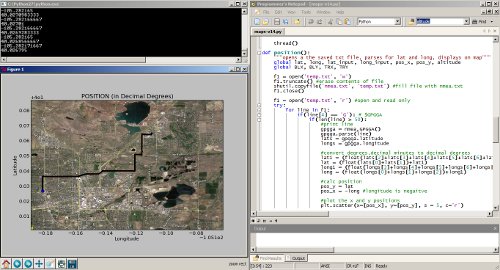

- #TRACK MOUSE COORDINATES OUTSIDE OF WINDOW JAVA HOW TO#
- #TRACK MOUSE COORDINATES OUTSIDE OF WINDOW JAVA SOFTWARE#
As another example, the Unity 3D game development system uses a left-handed coordinate system, wheras the Leap Motion software uses a right-handed coordinate system. Leap Motion y values increase upwards, so you have to essentially flip the y axis when making the conversion. For example, many 2D window drawing APIs put the origin at the top, left corner of the window, with y values increasing downward. You will need to find the best balance between speed and precision for your application.įinally, the difference between coordinate systems may require flipping an axis or three. This can make it easier for the user to move a pointer, for example, from one side of the application to another, but also makes precise positioning more difficult. The greater the scale factor, the more affect a small physical movement will have. how many pixels per millimeter in a 2D application).
#TRACK MOUSE COORDINATES OUTSIDE OF WINDOW JAVA HOW TO#
You also have to decide how to scale the Leap Motion coordinates to suit your application (i.e. Notice that when you try to reach the bottom corners, your finger passes out of the device’s field of view and you cannot move the cursor there. Consider the following example, which maps the Leap Motion coordinates to the rectangle below (this example requires a plugged-in Leap Motion controller to view): If you use too wide a range, or allow too low a height, then the user won’t be able to reach the bottom corners of your application. The available range on the x and z axes is much smaller close to the device than it is near the top of the range. The field of view is an inverted pyramid. Whether you use two or three axes, you have to decide how much of the Leap Motion range and field of view to use in your application. For 2D applications, you can often discard one axis, typically the z-axis, and map input from the two remaining axes to the 2D application coordinates. For example, to map Leap Motion coordinates to application coordinates, you have to decide which axes to use, how much of the Leap Motion field of view to take advantage of, and whether to use an absolute mapping or a relative mapping.įor 3D applications, it usually makes sense to use all three axes of the Leap Motion device. To use information from the Leap Motion device in your application, you have to interpret that data so it makes sense in your application. LayoutResult pLayoutResult = pRenderer.layout(new LayoutContext(new LayoutArea(0, new Rectangle(595-72, 842-72)))) įloat y = pLayoutResult.getOccupiedArea().getBBox().getY() įloat x = pLayoutResult.getOccupiedArea().getBBox().getX() Ĭlick How to find out the current cursor position on a page? if you want to see how to answer this question in iText 5.Mapping Coordinates to your Application ¶ IRenderer pRenderer = p.createRendererSubTree().setParent(doc.getRenderer()) After creating an element we can receive the occupied area and X and Y coordinates of it, by next way: Paragraph p = new Paragraph("Hello World")

In iText 7 we add elements to the page using doc.add(). Is there a way to do this in iText so that I don't need to keep track of the heights of each individual element added to the page?

The problem is, what gets written in the document depends on a lot of conditions, so I'd like to execute a command to tell me how much height has been consumed thus far in the document (for the current page) so I can set height appropriately. If I knew the height consumed thus far on the page, I could manually enter the correct height value and things work fine.

Of course, what I'd like to do is to add the column directly below the last thing written to the document in the final document.add() statement. This places the table in a column that starts at the top of the document.


 0 kommentar(er)
0 kommentar(er)
